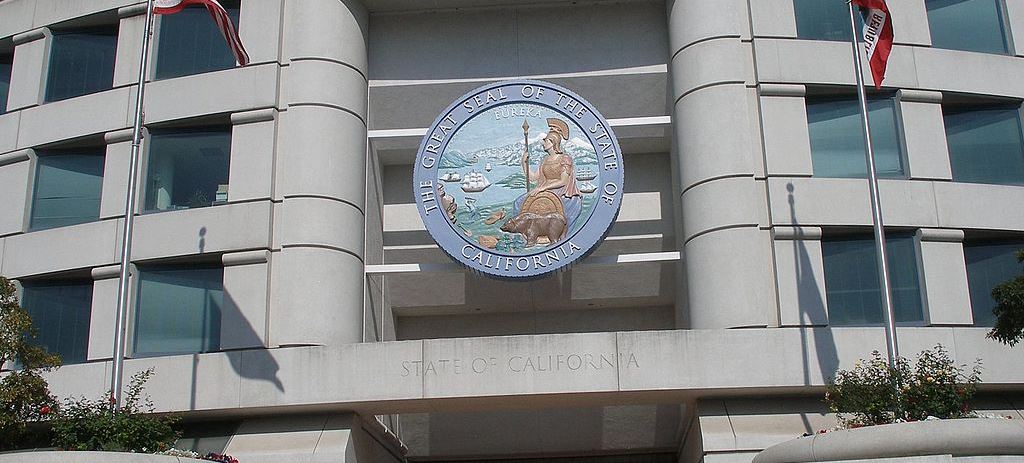Yesterday the California Public Utilities Commission (CPUC) voted 5-0 on an Alternate proposed decision modifying the power charge indifference adjustment methodology (158 page .pdf) for residential or business customers who move their electricity generation procurement from an investor-owned electric utility to a community choice aggregation (CCA) supplier.
The above referenced .pdf goes deeply into the presentations from all parties and the methodologies applied by the commission in making their decision, including – at the end of the this article – the CPUC’s ‘Final Guiding Principles’.
The CPUC estimates the alternation to the methodology will increase bills approximately 5.2% in San Diego Gas & Electric territory, 2.5% in SoCal Edison and 1.7% in Pacific Gas & Electric Co. for residential customers. The fees will make up roughly 15% of customer bills in the end.
It was very recently that the first CCA received an investment grade rating. Customers in that CCA, Marin Clean Energy, are expected to pay an 2-3¢/kWh as a result of this ruling. And just yesterday, pv magazine USA covered Peninsula Clean Energy (PCE) signing, on behalf of the residents of San Mateo County, a 20-year contract for 200 MW-AC of solar power – the largest solar plant to contract entirely with a CCA to date
CCAs made presentation on what they thought the fees ought be, while many suggested the fees ended up being closer toward the numbers requested by the electric utilities. Sammy Roth of Desert Sun suggested average residential customers in the Coachella Valley – when comparing two competing plans for the exit fees – would see a difference of $2 per month in the winter and $5 per month in the summer. The LA Times reported that some CCA groups in the San Diego area were happy that regulatory certainty arrived.
Mayors in the Bay Area pushed back against the proposed ruling, suggesting the discussion had been “rushed, opaque and with little concern for rate paying customer”.
It is unclear if these increases will cause many customers to leave CCAs. Customers can opt out of these entities if they wish and return to their utilities, but Peninsula Clean Energy reports that less than 3% of San Mateo County residents have chosen to do so.
The California CCA law allows cities and counties to create entities to procure power on behalf of their residents, independent of the investor owned utilities (IOU). CCAs still make use of the transmission, distribution and billing infrastructure owned and managed by the IOUs.
It is not only cities and counties, but corporations that have had to pay off utilities to procure their own electricity. Nevada exit fees for casinos were well into the tens of millions: MGM Resorts paid $87 million and Caesars $47.5 million. These large exit fees later became an issue when the state started pushing utilities toward higher renewable requirements. The utilities argued that since they paid large exit fees early on to get into renewable energy, the state now forcing everyone towards clean energy undercuts the value of their recent moves – and it might put into jeopardy future plans.
Municipal broadband is an parallel example where monopoly industries have pushed back against public cooperatives. Municipal broadband support websites suggest there are 20 states where municipal broadband is either explicitly outlawed, or the bureaucratic hurdles have made it practically so.
On page 15 of the decision, the CPUC notes its ‘Final Guiding Principles‘ in coming to the decision:
Any PCIA methodology adopted by the Commission to prevent cost increases for either bundled or departing load:
- should be transparent and verifiable, including the most open and
easily accessible treatment of input data, while maintaining
confidentiality of information that should remain confidential; - should have reasonably predictable outcomes that promote certainty
and stability for all customers within a reasonable planning horizon; - should be flexible enough to maintain its accuracy and stability if the
number of departing customers changes significantly, and to
maintain its accuracy and stability if customers return to
bundled-customer service; - should not create unreasonable obstacles for customers of non-IOU
energy providers; - should be consistent with California energy policy goals and
mandates; - should allow alternative providers to be responsible for power
procurement activities on behalf of their customers, except as
expressly required by law; - should allow an alternative provider to elect to pay for its share of
above-market costs in a manner that complements the CCA’s
particular procurement needs and goals; - should only include legitimately unavoidable costs and account for
the IOUs’ responsibility to prudently manage their generation
portfolio and take all reasonable steps to minimize above-market
costs; - should reflect the value of the benefits that departing customers
impart to remaining bundled service customers; - should accurately reflect and seek to preserve all short, medium, and
long-term value of the resources procured by the utilities; and - should respect the terms of existing power purchase agreements
(PPAs) between power suppliers and IOUs.
This content is protected by copyright and may not be reused. If you want to cooperate with us and would like to reuse some of our content, please contact: editors@pv-magazine.com.








By submitting this form you agree to pv magazine using your data for the purposes of publishing your comment.
Your personal data will only be disclosed or otherwise transmitted to third parties for the purposes of spam filtering or if this is necessary for technical maintenance of the website. Any other transfer to third parties will not take place unless this is justified on the basis of applicable data protection regulations or if pv magazine is legally obliged to do so.
You may revoke this consent at any time with effect for the future, in which case your personal data will be deleted immediately. Otherwise, your data will be deleted if pv magazine has processed your request or the purpose of data storage is fulfilled.
Further information on data privacy can be found in our Data Protection Policy.